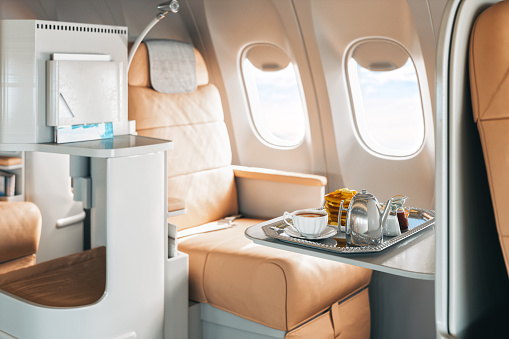
On a recent trip to Europe, I cashed in a year’s worth of miles to upgrade to first class. On my first international first-class experience, the airline exceeded my expectations. In fact, I was so impressed, I was inspired. Specifically, I wondered why more brands don’t create first-class experiences. I propose that any brand can create a similar experience with proper training, processes and culture. In fact, I believe “first class” is a mindset, not an experience that should be reserved for an elite few.
1. Build a foundation.
It all starts with recruiting. If your employees aren’t able or willing to create first-class experiences, then you’ve got the wrong team. One you’ve found talent with the proper mindset, give them the training and support they need to be successful. The Ritz-Carlton is a great example of this support: each employee has a $2,000 allowance to resolve any incident or complaint. Make sure your processes guide remarkable experiences and your corporate culture rewards employees for delivering on the promise exceptionally well. Lastly, set metrics and benchmarks and continuously measure and optimize customer service and product delivery.
2. Set the stage.
We all know first impressions are everything, yet far too often, brands do not make the extra effort to set the stage and ensure the experience is identical for all customers. Flying first class is an excellent example of setting the stage, with early boarding, roomier seats and other rewards like beverages and snacks when you arrive at that seat. Building in surprises for first-time customers is prudent. (In my case, it was the slippers.) By comparison, a modest example of stage-setting at my agency was a lobby sign on which we would hand-draw the logo of the visiting company with erasable pens. Not only did visiting clients appreciate the effort, but it also distracted from the fact we didn’t have a receptionist at the front desk.
3. Don’t judge.
We’ve been led by popular culture to believe that VIP experiences are reserved for the ultra-wealthy or famous. While that is often the case, it can be dangerous to judge someone by their appearance. While airlines sell tickets and know who sits where, retail employees often judge patrons walking off the street to determine what level of service they deserve, if any. That can be a deadly mistake if someone dressed shabbily happens to be rich and/or famous. In 1999, I walked into a BMW dealership in sandals, torn jeans and a fleece jacket. The salesperson treated me like I was wearing a suit, and I ended up ordering a car from him that week. Your best customers can look like anyone and everyone, so judge at your own risk.
Portland Business Journal Leadership Trust is an invitation-only network of influential business leaders, executives and entrepreneurs in your community. Do I qualify?
4. Close the curtain.
While my theory is that any brand can create a first-class experience, there are justifications for creating a tiered approach to service levels. Financially, it can be challenging to give 100% of your customers a VIP experience. More importantly, however, is the psychology of contrast. If everyone receives the same exceptional level of service, it can diminish the effort and impact. Airlines typically provide two to three levels of seating options, and restaurants offer reserved seating for VIPs. To maximize the impact of your first-class experience, consider creating your own “curtain” or tiered level that separates first class from the rest. Increasingly, brands are relying on loyalty programs to reward frequent customers. While there is justification for loyalty programs and other tiers, don’t let this limit the level of attention employees give to customers.
5. Create comfort.
A relaxed customer is a happy customer. Explore ways to create creature comfort early in the customer experience. The airline on which I flew first class provides its passengers with a large pillow, blanket, slippers and fully reclining chair. The service level in first class is also exceptional, with frequent check-ins and fancy meals. Conversely, an affordable stay at a DoubleTree earns you a warm cookie, and breakfast is included at many locations. There are opportunities to create comfort at any price point. What is your three-course meal?
6. Maintain momentum.
Creating first-class experiences is a marathon, not a sprint. Ensuring every touch point feels special requires planning, training and oversight. That doesn’t mean you shouldn’t encourage employees to think on their feet. I noticed that the airline staff were quick to adapt to my requests and style, which was quite pleasing. Teach your employees to learn and act quickly to solve problems that delight customers. And remember that the experience shouldn’t end when the customer leaves the premises. Send a follow-up mailer or email survey to ask for feedback. This not only provides learning opportunities but reminds the customer of the (hopefully) exceptional experience, thus increasing the likelihood they will return.
